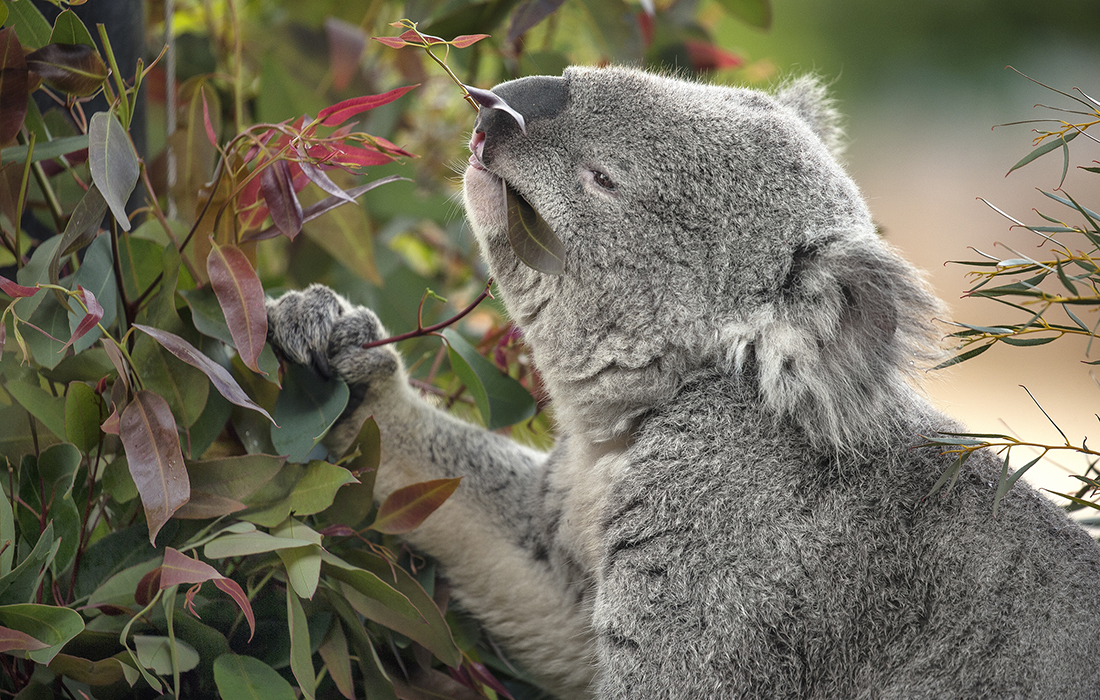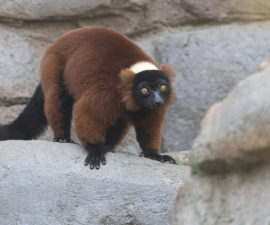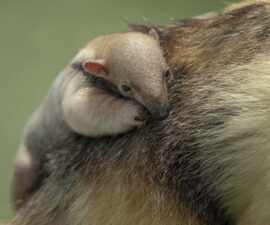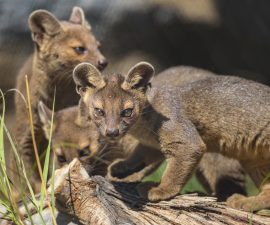BY Peggy Scott
Photography by Tammy Spratt
The concept of farm-to-table dining takes on a whole new meaning at the San Diego Zoo and Safari Park. Thanks to the combined effort of the browse and horticulture teams, animals at both facilities not only enjoy homegrown greenery in their feeders, they also get to play with their food! “We farm 100 different plant species, and we get a lot from the Park and Zoo’s botanical bounty, such as hibiscus and ficus,” explains Adam Graves, horticulture manager at the Zoo. “We have nine people responsible for the harvest and delivery of browse. We deliver 250 to 300 tons of browse every year.” While that seems like a lot of work (and it is!), it’s a labor of love. “It’s pretty enjoyable to see the animals eating and enjoying what you’ve cut,” Adam says.
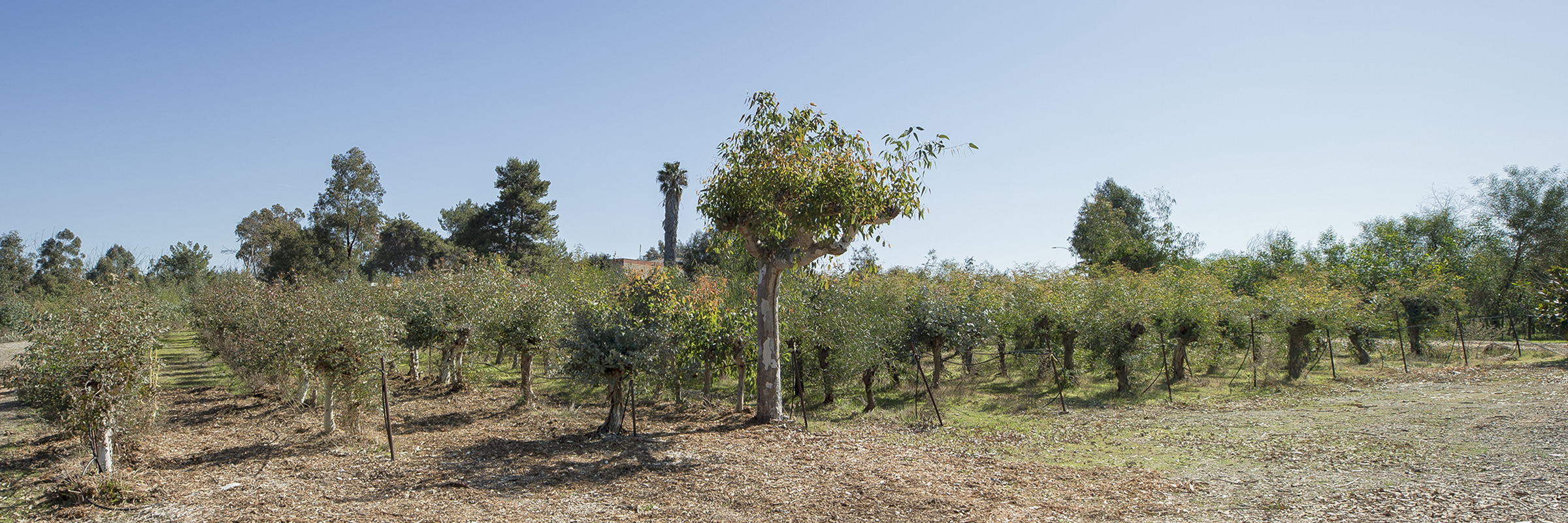
Meals on Wheels
The team harvests browse from 30 acres of off-site land—plus vegetation from onsite landscaping—to serve 200 to 300 animals, which is 3 to 4 percent of the animal collection. Koalas receive 40 tons of eucalyptus annually, while pandas munch through 45 tons of bamboo. Primates and elephants go through 150 tons of ficus, and various hoofed species make short work of 20 tons of acacia each year. Adam notes that their list of animals requesting room service grows continuously. “We would love to be able to provide fresh browse to every single animal every day,” Adam says. “There are lots of needs to be met.”
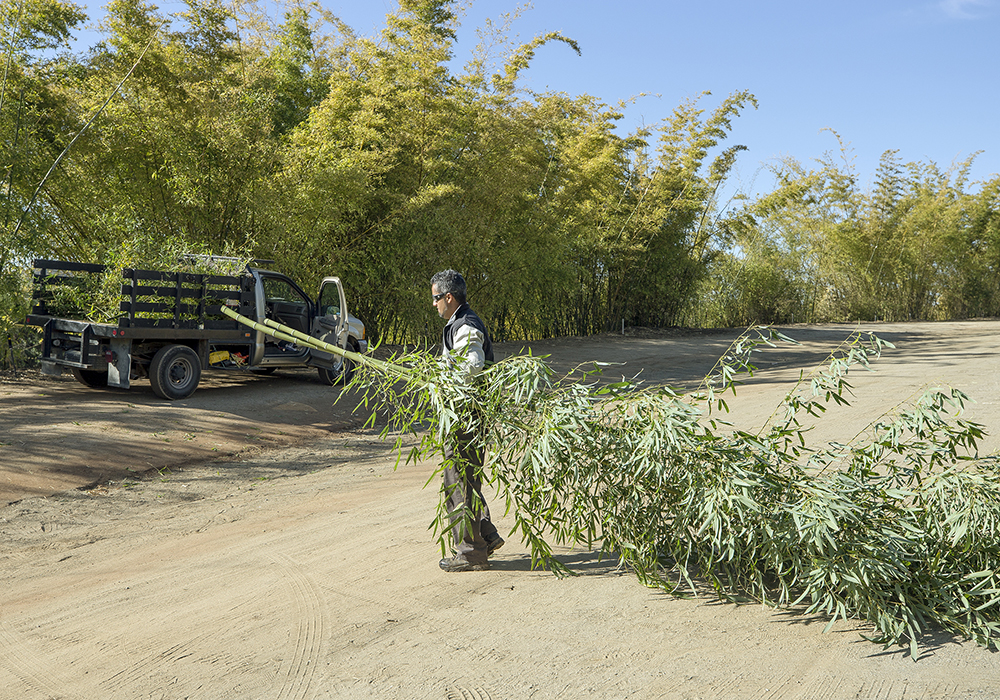
BRANCH MANAGER
The Safari Park uses part of its overflow parking area to grow bamboo, where it is harvested by team members such as Christian Barnard.
While pandas and koalas keep the browse team the busiest, they are hardly the only members of the Zoo and Park dining delivery system. Giraffes, gerenuks, klipspringers, and giant elands are acacia aficionados; while cactus is the choice for Galápagos tortoises and giant peccaries. Pygmy hippos and black rhinos happen to prefer ficus. Other animals, such as primates, have a wider palate, happily partaking of banana leaves, hibiscus, Eugenia, ficus, and more. And the least-picky eaters? “Elephants,” Adam says.
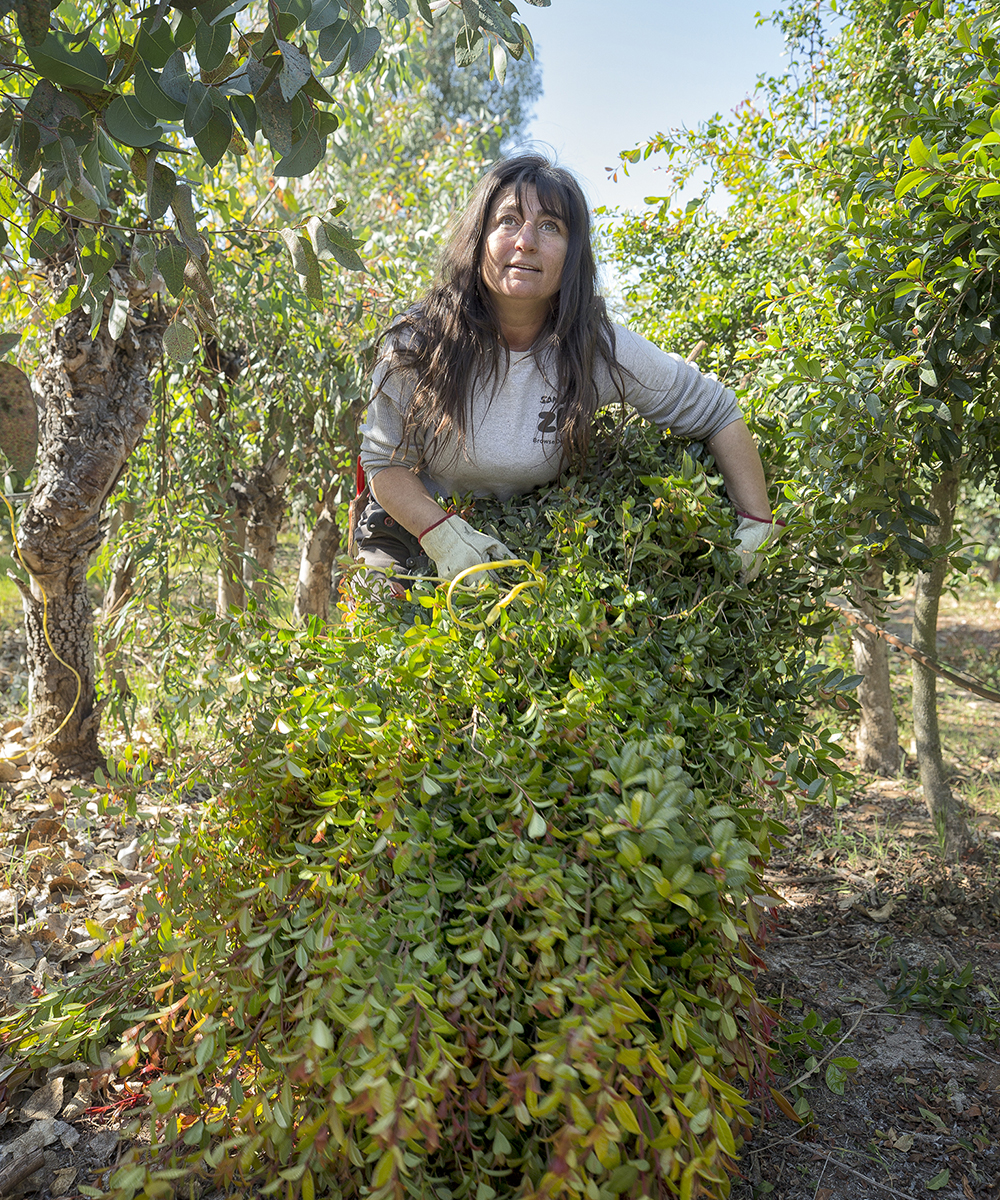
SAVING A BUNDLE
Sirena Aboumrad collects browse that keepers will later offer to several types of primates.
“We deliver over a truckload of material to the elephants each day. Their main staple is ficus, but they have a long list of approved plants to eat—from giant bird of paradise to bamboo.” Whole ficus trees also do wonders for keeping the elephants’ teeth in good shape, Adam notes, adding that willow, poplar, and elm logs serve the same purpose for beavers. “Those teeth need to be kept filed down,” he says.
The Zoo and Park’s animal collection also includes a number of what Adam refers to as “one-offs,” or animals whose diets are supplemented by a plant or two. “Wallabies and musk deer enjoy Cape honeysuckle and lavender star flower,” Adam says.
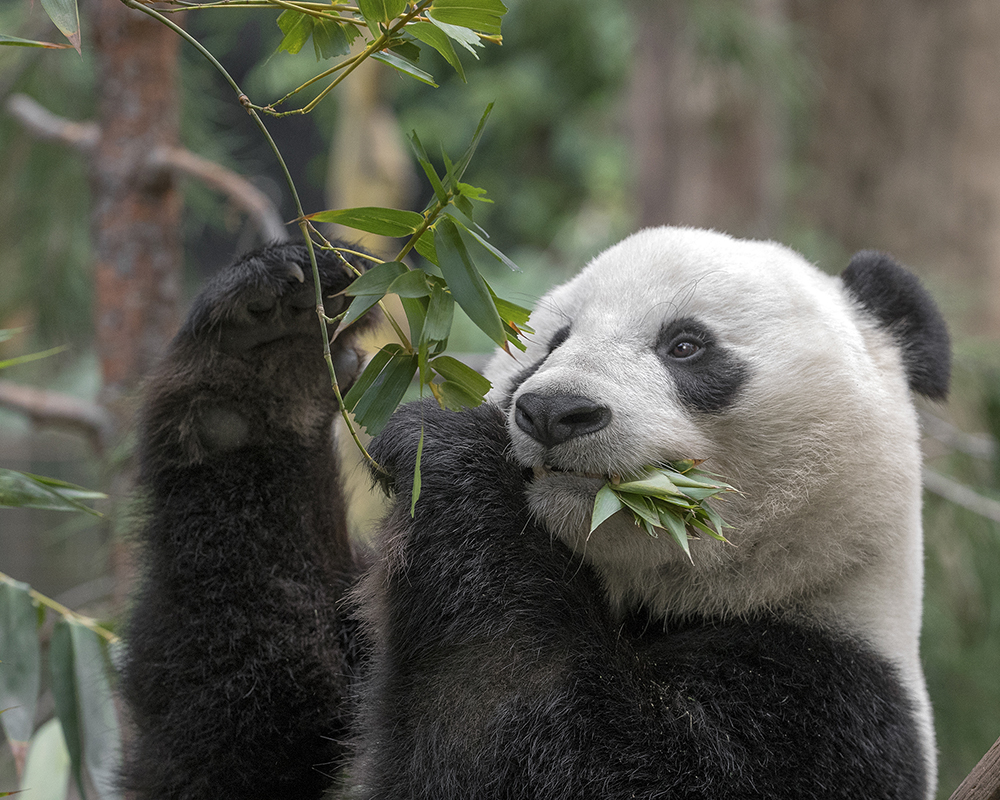
“MUNCH” BETTER
The Zoo’s pandas go through 45 tons of bamboo each year. The bears receive fresh browse five days a week, rain or shine!
Would You Like Your Usual?
Because of their specialized diets, koalas and pandas are the browse team’s two top customers. They are considered browse-dependent, because fresh material makes up so much of their diet, so they receive deliveries five days a week, rain or shine. “Koalas eat only eucalyptus,” he says. “And eucalyptus functions as koalas’ water source as well, so it’s doubly important that they get high-quality, new-growth eucalyptus.” There are more than 700 different known eucalypts, and Adam’s crew farms over 30 of them. But even though this is the koala’s food of choice, “they can be super picky about what species of eucalyptus they like and when they like it,” he says.
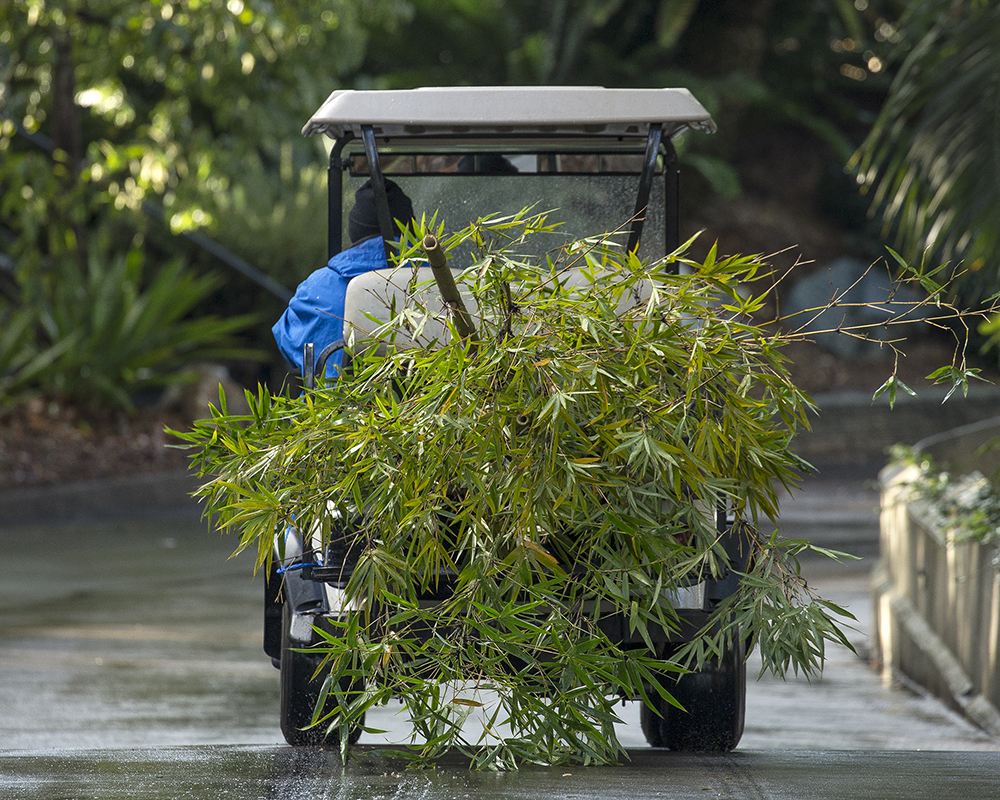
SPECIAL DELIVERY
The Zoo’s browse and horticulture departments work together to supply as many animals as possible with homegrown food and enrichment.
A vast majority of our pandas’ diet comes from fresh bamboo, but keepers are also able to make bamboo bread out of shredded bamboo and biscuit-like material, which the bears love. And, according to pandas (at least as far as our browse team knows), all bamboo is not created equal. “Feeding pandas is more an art than a science,” Adam explains. “Their preferences can be seasonal—do they want shoots or older material?” He points out that preference isn’t always the deciding factor. “Just because they like it doesn’t mean it’s the best thing for them. If tropical bamboo is their ice cream, then temperate bamboo is broccoli.”
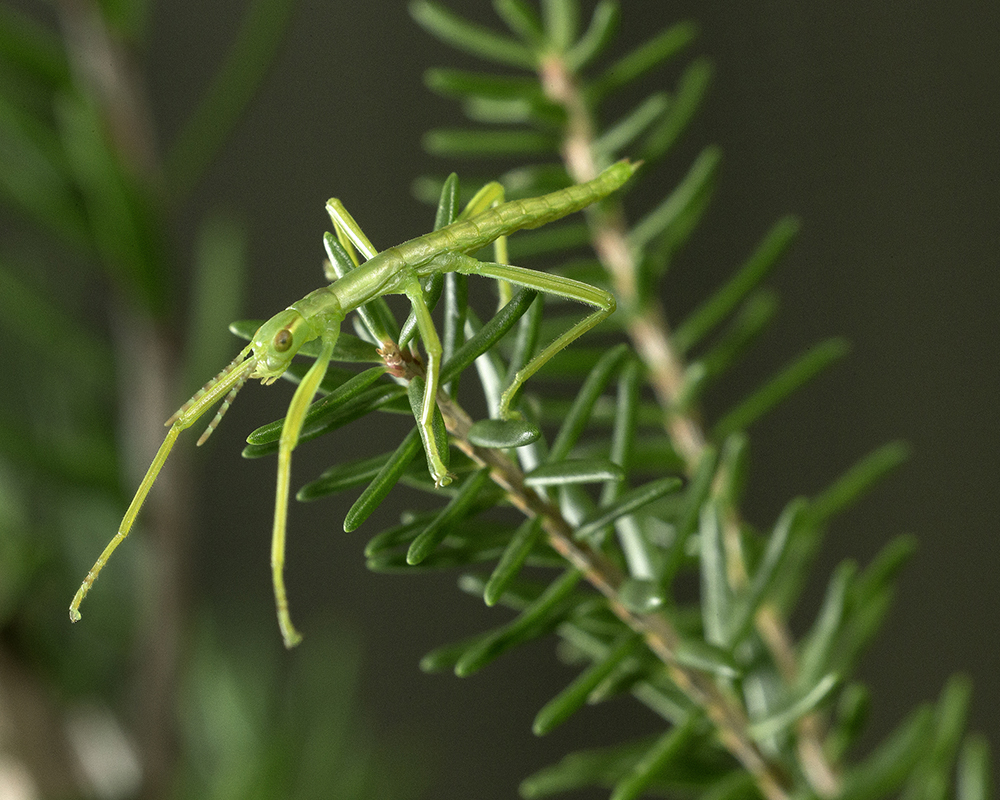
ROOM AND BOARD
The Lord Howe Island stick insect requires a specific plant species, tea tree Melaleuca howeana, for both food and housing purposes.
Fun, Not Food
While meeting animals’ nutritional needs is the main goal of the browse team, feeding their cognitive and developmental needs is important too. Many forms of enrichment can blossom from browse. Adam notes that puzzle feeders are fashioned from bamboo, and napier grass keeps baboons busy as they play with it. Pine boughs make nice bedding for panda furniture, and bamboo and small branching materials with foliage are used by birds to make nests.
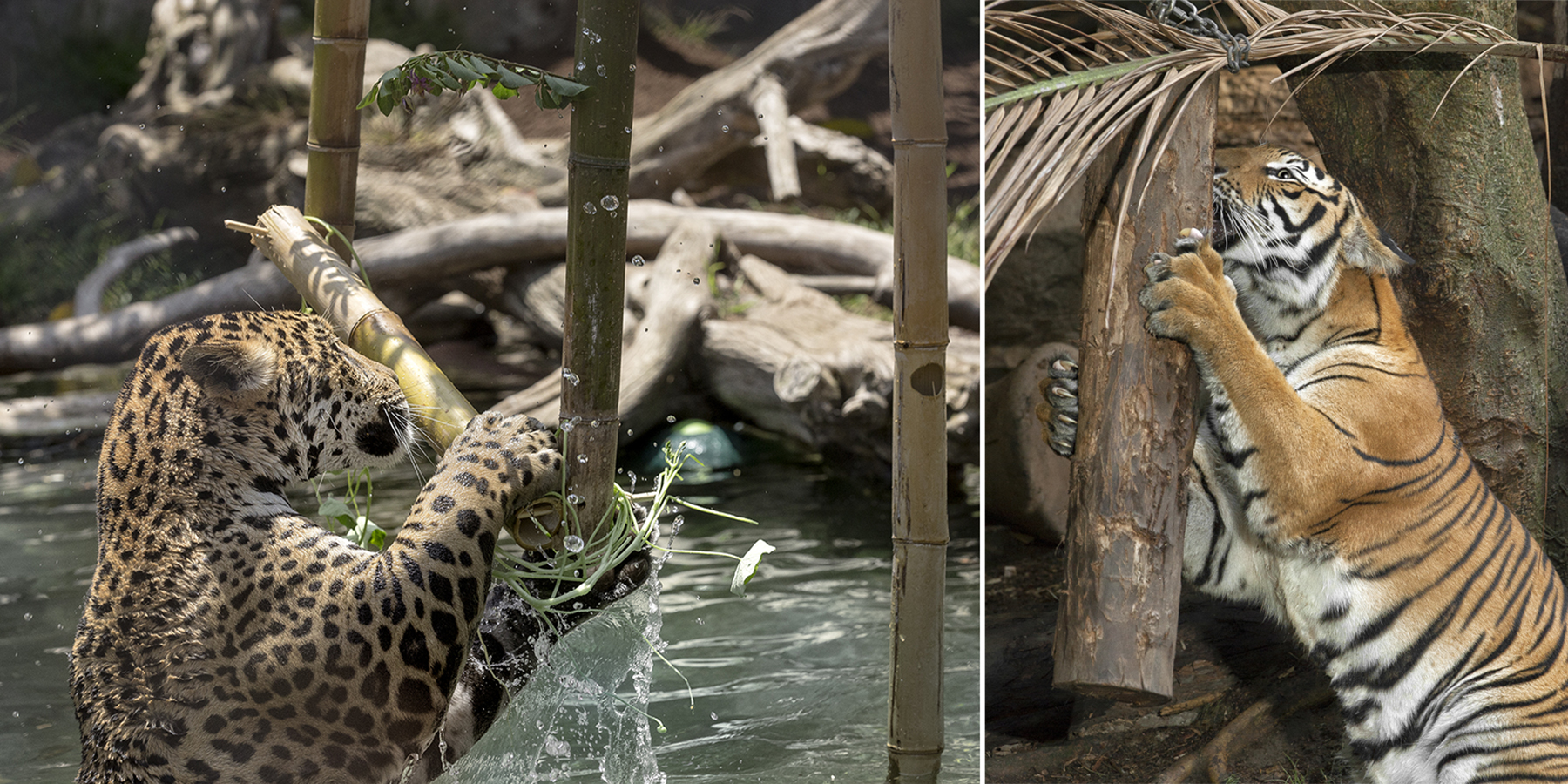
SCRATCH AND SNIFF
Big cats, like jaguars and tigers, enjoy the different textures and smells found in the large tree pieces placed in their exhibits.
Large tree pieces—like trunks—are delivered by crane into exhibits to help create furniture for a wide variety of animals. One animal, the Lord Howe Island stick insect, depends upon Melaleuca howeana (tea tree) for its very existence. The endangered invertebrate needs this specific host plant in order to survive, as it shelters in the tree’s crevices during the day and feeds on it at night. “There seems to be a use for just about everything,” Adam says. “For food, enrichment, housing—we try not to let anything go to waste.” That’s food—and more—for thought.

